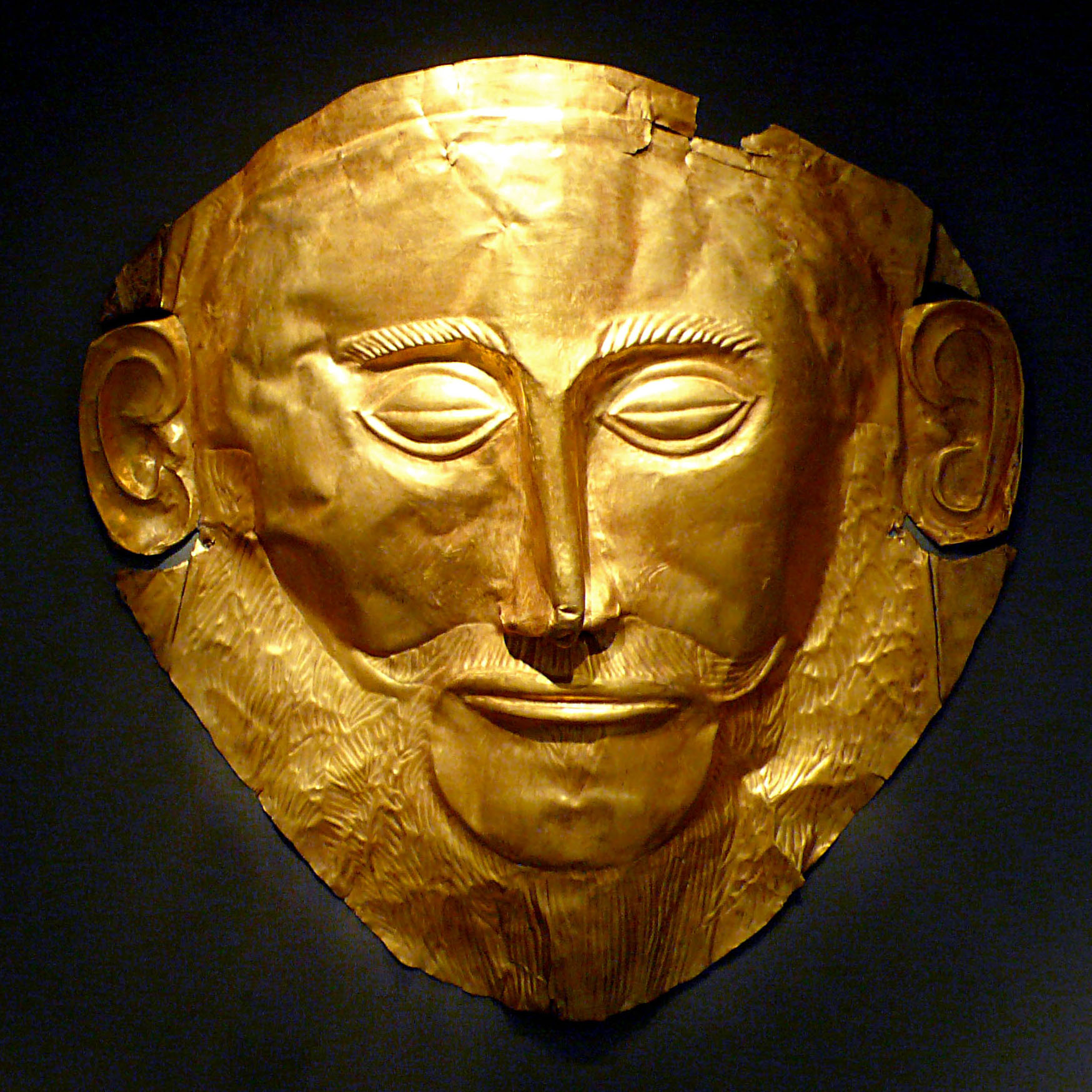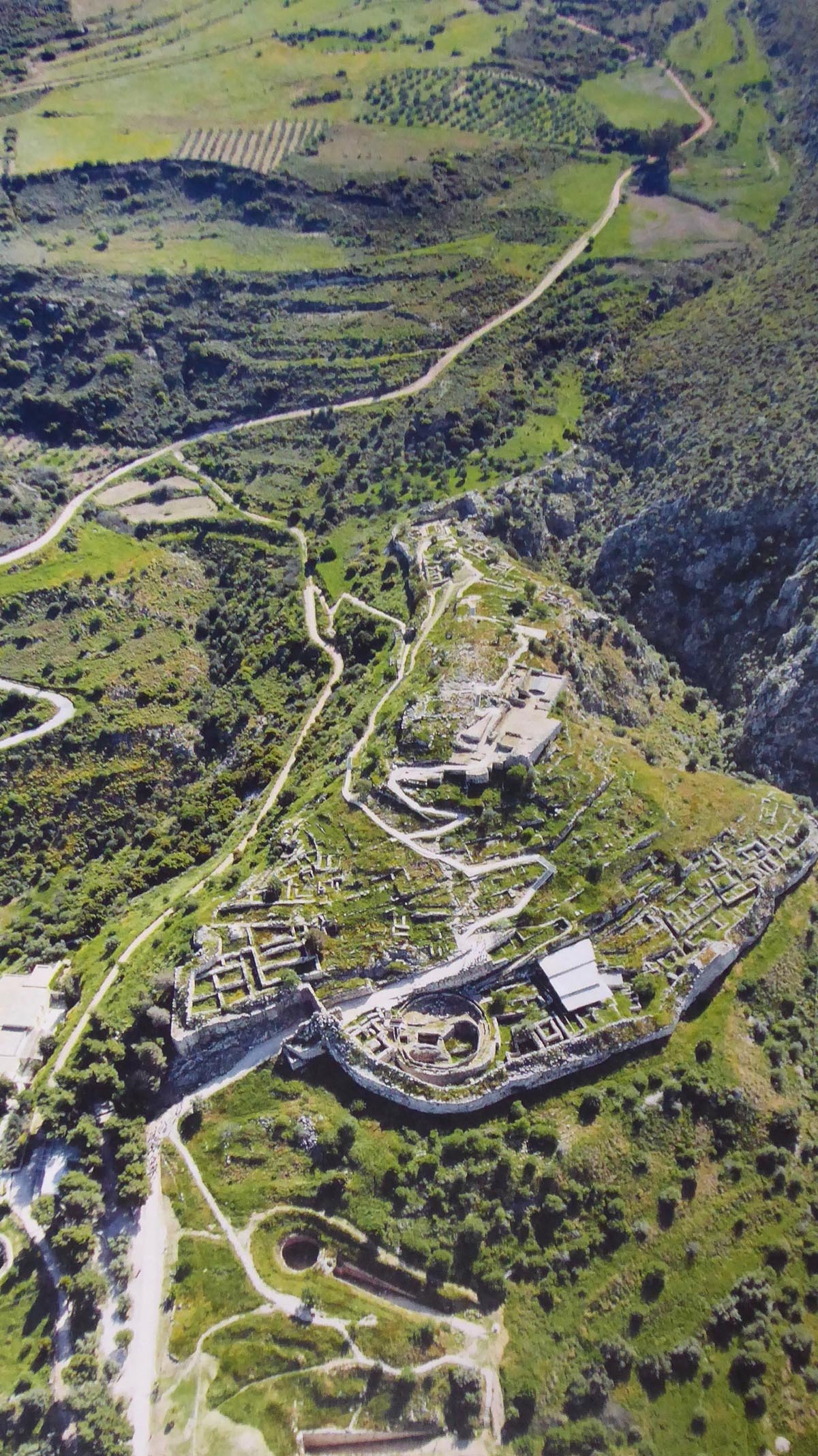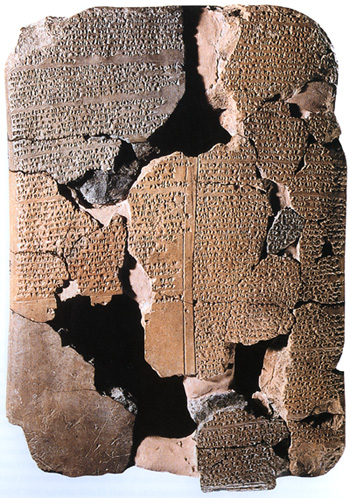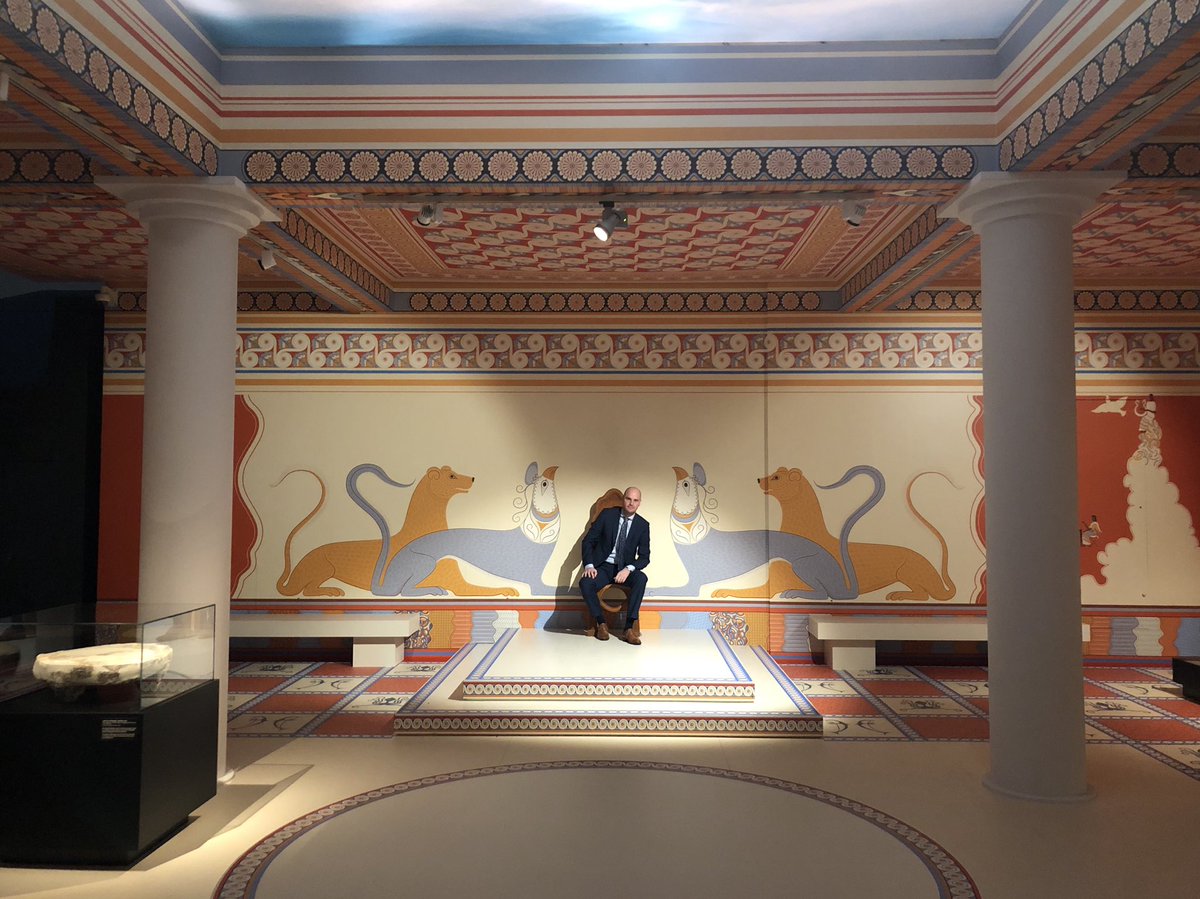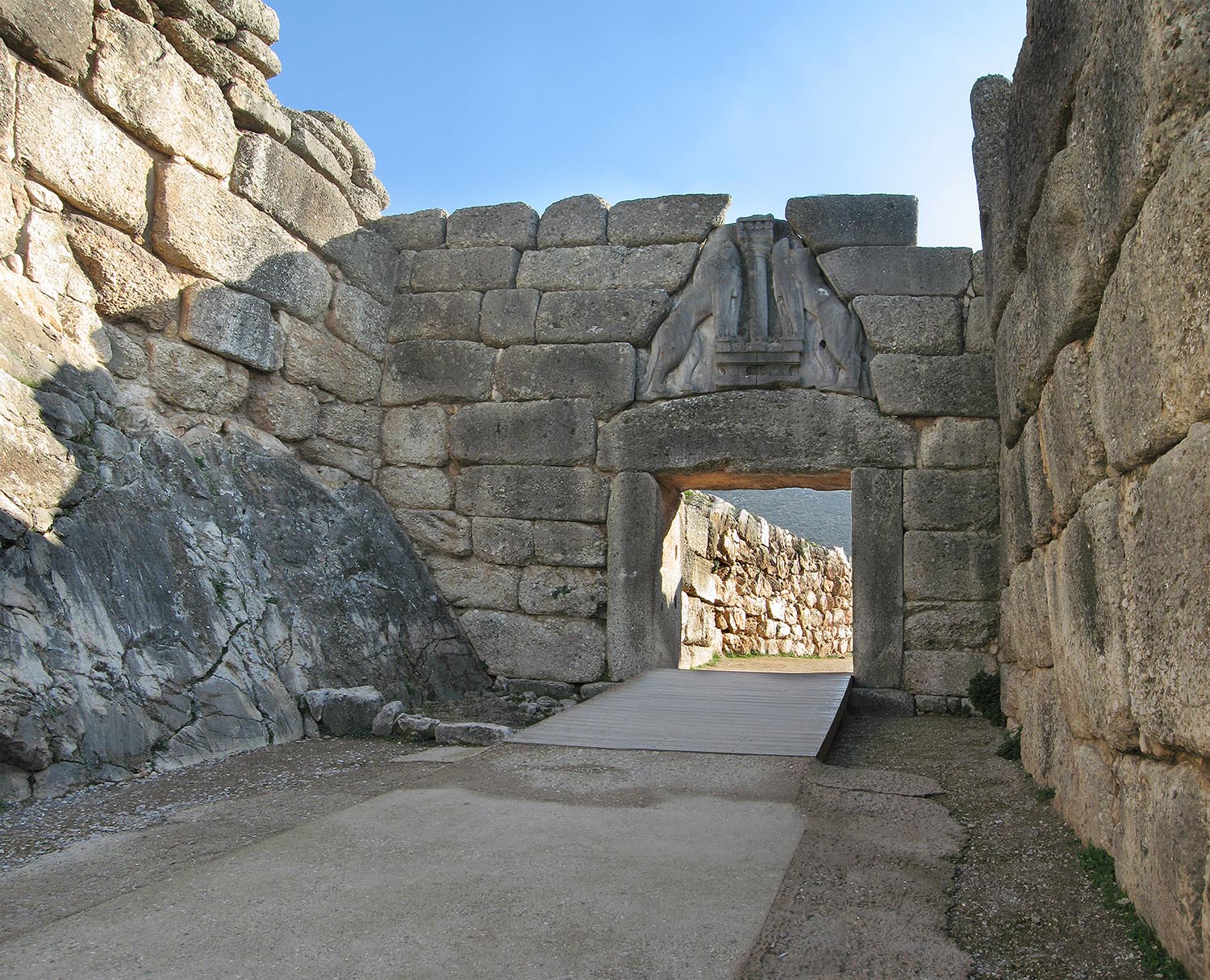

November 2019
Vol. 7, No. 11
A Great King and a Wanax? The Politics of Mycenaean Greece
By Jorrit Kelder
The Near East during the Late Bronze Age (ca. 1600–1100 BCE) was dominated by superpowers, including Egypt, the Kingdom of the Hittites, Kassite Babylon and, after the demise of the Kingdom of Mitanni in the mid-14th century BC, Assyria. But what was happening to the west?
Numerous smaller entities, such as the wealthy city-states in the Levant, were incorporated in these large kingdoms, though local dynasts were often allowed to retain much of their power. In theory, at least, the world was thus ordered in more or less coherent states, and ruled by a small number of so-called ‘Great Kings.’
 Map adapted from the Oxford Classical Dictionary. ( https://oxfordre.com/classics/page/maps-aegean )
Map adapted from the Oxford Classical Dictionary. ( https://oxfordre.com/classics/page/maps-aegean )
But beyond the ‘civilised’ Near East lay a far less organised world, full of petty states, chiefdoms, and nomadic tribes. Until recently, most historians thought that the Greek world was a part of this ‘barbarian’ world. There certainly was evidence for local outbursts of wealth and artistic splendour (think of the magnificent objects found in the ‘Shaft Graves’ at Mycenae, dated to the 17th to 16th century BCE). The famous archaeologist Heinrich Schliemann had also uncovered a number of impressive citadels dating to the 14th and 13th centuries BCE, including the magnificent fortress of Tiryns and Mycenae itself. But the size of these citadels was modest (the citadel of Mycenae only covers some 3 hectares or so), suggesting a much lower level of complexity than known from contemporary societies in the Near East.
The rocky landscape of Greece, moreover, would have prevented any of these early centres to control others. As a result, most scholars thought of Late Bronze Age Greece as a patchwork of competing citadels that controlled their immediate surroundings and perhaps some smaller villages in the countryside, but not much more. Indeed, one leading scholar likened citadels such as Mycenae to ‘Potemkin palaces’, suggesting that their inhabitants had tried to emulate contemporary Near Eastern palaces, while in reality they were not much more than wealthy farmsteads strategically positioned along trade routes.
 Golden death mask found by Heinrich Schliemann in the Shaft Graves at Mycenae. It is known as the ‘mask of Agamemnon’, though it dates to the 16th century BC and thus is unlikely to relate to that mythical ruler. (photo by Xuan Che, via Wikipedia)
Golden death mask found by Heinrich Schliemann in the Shaft Graves at Mycenae. It is known as the ‘mask of Agamemnon’, though it dates to the 16th century BC and thus is unlikely to relate to that mythical ruler. (photo by Xuan Che, via Wikipedia)
 The citadel of Mycenae from the air. The circuit walls are mostly of 13th century BC date, as is the Lion Gate. Grave Circle A, where the Shaft Graves were cut, was only included within the citadel walls during this last phase of expansion, possibly in an attempt to bolster dynastic claims. Recent research indicates extensive occupation in the area around the citadel, with a lower town that may have been protected by a, now-gone, fortification wall. (from the ‘Mykene, die Sagenhafte Welt des Agamemnon’ exhibition catalogue, Karlsruhe 2019)
The citadel of Mycenae from the air. The circuit walls are mostly of 13th century BC date, as is the Lion Gate. Grave Circle A, where the Shaft Graves were cut, was only included within the citadel walls during this last phase of expansion, possibly in an attempt to bolster dynastic claims. Recent research indicates extensive occupation in the area around the citadel, with a lower town that may have been protected by a, now-gone, fortification wall. (from the ‘Mykene, die Sagenhafte Welt des Agamemnon’ exhibition catalogue, Karlsruhe 2019)
But the last 20 years or so some have begun to question these views. An important reason for this was the realisation that references in Hittite texts to ‘Ahhiyawa’ (a country that, over the course of the 14th and 13th centuries BCE, appears to have been a formidable influence in western Anatolia) must somehow relate to the Mycenaean Greek world. This notion was not new: already in 1924, Swiss philologist Emil Forrer proposed that Hittite ‘Ahhiyawa’ must refer to Greek ‘Achaea’, but his views had been largely rejected and his career was essentially destroyed. A new reading of an inscription by the British Hittitologist David Hawkins, however, proved that Forrer was right and that Ahhiyawa must indeed have lain in the Aegean and not, as previously thought, in Anatolia.
 The ‘Tawagalawa Letter’; a fragmentary Hittite text attributed to Hattusili III full of complaints about Ahhiyawan misbehaviour on the Anatolian west-coast. One of the complaints seems to focus on the activity of Tawagalawa (Eteokles), the ‘brother of the King of Ahhiyawa’, who reportedly is recruiting (or capturing?) Hittite subjects.
The ‘Tawagalawa Letter’; a fragmentary Hittite text attributed to Hattusili III full of complaints about Ahhiyawan misbehaviour on the Anatolian west-coast. One of the complaints seems to focus on the activity of Tawagalawa (Eteokles), the ‘brother of the King of Ahhiyawa’, who reportedly is recruiting (or capturing?) Hittite subjects.
Some 30 or so texts are now known that refer to various military clashes between Ahhiyawan and Hittite forces, the exchange of diplomatic letters and greeting gifts between the Hittite and Ahhiyawan court, and even personal relations between Hittite and Ahhiyawan royalty. They offer not only a fascinating insight in diplomatic, military, religious and even dynastic interaction between the royal courts on either side of the Aegean Sea, but they also provide a stunning Late Bronze Age backdrop to many names and even tales that are familiar from later Greek myth.
The first Ahhiyawan to appear in Hittite texts (ca. 1400 BCE) is ‘Attarissija’; a name that is uncomfortably close to Homer’s description of Agamemnon and Menelaos as ‘the Atreids’ – sons of Atreus. References to the city of ‘Wilusa’, which had been the focus of a conflict between the Hittites and Ahhiyawa, and the name of one of the Kings of Wilusa, ‘Alaksandu’, seemed to be taken almost verbatim from the Iliad. Wilusa easily compares to Greek (w)Ilios, whereas ‘Alaksandu’ evidently is Hittite for ‘Alexandros’, which is used by Homer to refer to the Trojan prince Paris.
And what about the ‘brother of the king’ of Ahhiyawa, Tawagalawa, who is reported to have been active in the area of the city of Millawanda, around the mid-13th century BCE? His name, Tawagalawa, is easily compatible with Greek ‘Ete(w)okle(w)es’, the legendary King of Thebes in the story of the ‘Seven against Thebes.’ Millawanda, at the same time, is a perfectly acceptable Hittite rendering of Greek Miletus, and indeed, excavations have demonstrated a sizable Mycenaean settlement at that site.
The realisation that we actually have references –and quite a few of them! – to Mycenaean Greeks has resulted in new problems. The Hittite texts make it quite clear that the Mycenaeans, for much of the 14th and 13th century BCE, were a force to be reckoned with and clearly able to hold their own in the face of Hittite expansion. This seems incompatible with the idea of Mycenaean ‘potemkin’ palaces. What’s more, in one text, probably written by the Hittite King Hattusili III to his Mycenaean counterpart, the King of Ahhiyawa is not only addressed as a ‘royal brother’, but explicitly accorded the Akkadian title ‘LUGAL.GAL’ – Great King. In a slightly later text, dated ca. 1220 BCE, the King of Ahhiyawa is included in a list of Great Kings, although this entry was subsequently erased.
The attribution of the title Great King to a ruler of Ahhiyawa is remarkable: only few kings of the ancient Near East were accorded this honour. The title designated a ruler who was able to control other, lesser kings and received tribute and military support from these vassals in exchange for his support to their regimes. Importantly, a Great King was subject to no one (save perhaps the gods) and was the only one who could engage in diplomatic contact with foreign potentates and declare war on other rulers.
The title was thus much coveted and a reflection of real economic, political and military clout. Indeed, even kings who clearly were part of that select group of superpowers, such as the King of Assyria, occasionally were snubbed for using this title in their correspondence with foreign peers. So how does the picture from Hittite texts, of a powerful Ahhiyawan state that apparently conformed to the Hittite concept of a Great Kingdom, tally with our understanding of a Mycenaean world full of small, culturally identical but politically independent states?
The obvious answer is that it doesn’t, and archaeologists and philologists have struggled to cope with this apparent dichotomy. Some have suggested that the Hittites had a poor understanding of the Mycenaean world and mistook a petty ruler from a far-away state as a major ruler. Others argue that the attribution of the title Great King was borne of political opportunism and flattery. There are serious problems with either solution, not least because both boil down to special pleading, for there is no evidence that an important title like this was ever used so flippantly.
 A reconstruction of the Throne-room of the palace at Pylos, on show in the ‘Mycenae’ exhibition in Karlsruhe, Germany (2019). Note that the figure on the throne is somewhat anachronistic; there is no indication that a Mycenaean king ever wore a suit.
A reconstruction of the Throne-room of the palace at Pylos, on show in the ‘Mycenae’ exhibition in Karlsruhe, Germany (2019). Note that the figure on the throne is somewhat anachronistic; there is no indication that a Mycenaean king ever wore a suit.
 The Lion Gate at Mycenae. Recent research indicates that it was made by using Hittite-style tools, suggesting even closer connections between the Hittite and Mycenaean world than previously thought.
The Lion Gate at Mycenae. Recent research indicates that it was made by using Hittite-style tools, suggesting even closer connections between the Hittite and Mycenaean world than previously thought.
Perhaps instead of doubting the Hittites we should reconsider our own ideas about the Mycenaean world. How solid is the archaeological evidence when it comes to reconstructing Mycenaean states? I have become convinced that the archaeological data are in fact entirely compatible with the notion of a unified Mycenaean state, encompassing all of the known palatial centres –including Mycenae, Tiryns, Thebes, and Pylos. For example, clay tablets that have been found in these palaces are remarkably similar in shape, size, and script, which suggest they were the part of the same administration. The texts on these tablets mention two king-like figures: a wanax and a lawagetas. Could these not have been the Mycenaean designations for a ‘Great King’ and a local, vassal ruler? And could this perhaps explain why a number of Mycenaean palaces have two throne-room-like structures: one for the (visiting) Great King and one for the local vassal ruler?
As long as no new and unequivocal evidence is uncovered, much of this debate must remain a matter of conjecture and of weighing probabilities. But new finds increasingly seem to point to a far more ‘Near Eastern’-like Mycenaean state than hitherto thought. Recent work by the American archaeologist Nick Blackwell has indicated that the famous Lion Gate from Mycenae was created and restored by means of Anatolian style tools –suggesting much closer connections between the Aegean and Anatolia than previously thought. Moreover, new excavations at sites such Aghios Vasileios in Lakonia (where a whole new palace is being uncovered!) and Iklaina in Messenia have already opened up new vistas on Mycenaean state-formation and political structures in the Late Bronze Age Aegean. With a bit of luck, and more digging, we may yet provide more definitive answers to some of the questions posed above.
Jorrit Kelder is a Visiting Professor in Greek archaeology at Ghent University and an Associate at the Oriental Insitute of the University of Oxford. Together with Willemijn Waal (Leiden University), he edited ‘From LUGAL.GAL to Wanax: Kingship and political organisation in the Late Bronze Age Aegean’, published by Sidestone Press.

